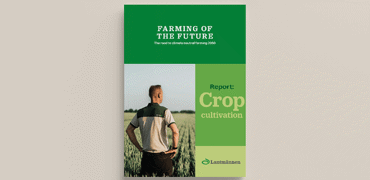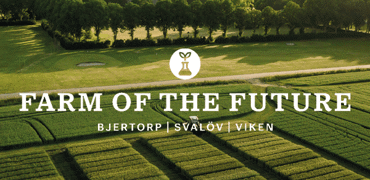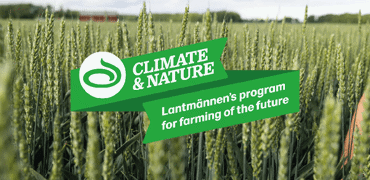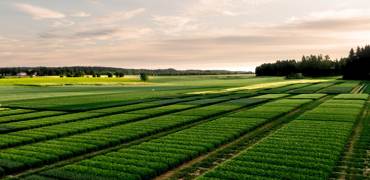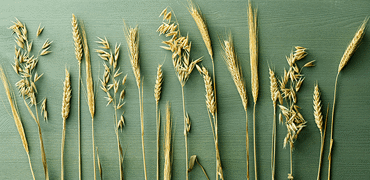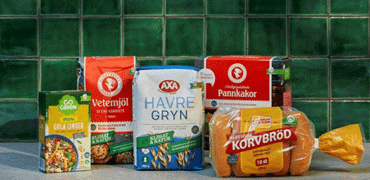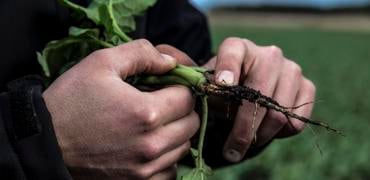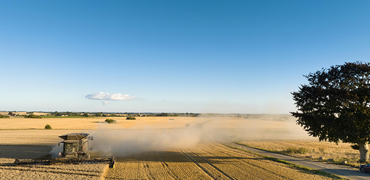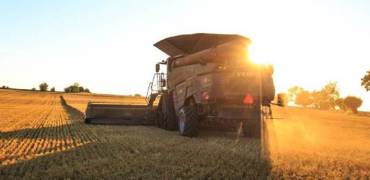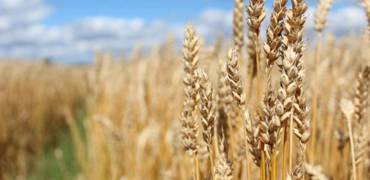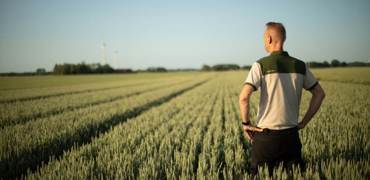Lantmännen’s forecast for the annual harvest of grain, oilseed crops and pulses amounts to 6.1 million tons, which is lower than last year’s bumper harvest but slightly above the five-year average.
“We are expecting a good harvest in Sweden this year, in terms of both volume and quality, although there will be regional differences. We have a big responsibility to handle the harvest in the best ways. Lantmännen has plenty of capacity to receive, dry and store grain and is well-prepared to take charge of this year’s harvest in a safe and secure way, despite the ongoing coronavirus pandemic,” says Mikael Jeppsson, Head of the Grain Unit at Lantmännen.
Sweden needs to increase its food production
When people in Sweden started to stockpile food in association with the spread of the coronavirus, the issue of how long and how well Sweden could manage its food supply during an extended crisis was raised. The coronavirus pandemic has quite clearly brought to a head the question of how important Swedish agriculture and a functioning food chain are. Sweden’s access to food and capacity to be self-sufficient are too a large extent based on the Swedish harvest.
“Ensuring a good food supply is of the utmost importance, especially in times of crisis. As such, this year’s harvest is more significant than ever and we as a business, and our members – Swedish farmers – have an important social responsibility. Together, we take responsibility from field to fork and to secure the entire food value chain, from farms to store shelves and consumers,” says Per Lindahl, Chairman of the Lantmännen Board.
In the spring, the Swedish government classed the food sector as an essential business for society, and food production is a core sector in the Swedish economy.
“We ought to increase the proportion of Swedish-produced food. Sweden has world class food production and we have some of the world’s most sustainable agriculture. Sweden’s farmers produce high quality food and the Swedish food sector employs 300,000 people in Sweden. The Swedish food sector has a goal of producing more food in a sustainable way, to meet changing demand, increase the level of supply and export more,” says Per Olof Nyman, Lantmännen Group President and CEO.
The 2018 drought, when Sweden went from being a net exporter of grain to net importer, was followed by a very good annual harvest in 2019, and Sweden could once again export grain to a large extent. The prospects for grain exports look good this year as well.
“Exports are a big part of Lantmännen’s business and a good harvest 2020 means that we will continue to be able to export grain to Europe, North America and North Africa,” says Jeppsson.
The road to the 2020 harvest
Conditions have varied in different parts of the country, especially in terms of rainfall. In southern areas if Sweden, the harvest is expected to be of normal size, or slightly below. Further north, and around Mälardalen in particular, a larger harvest is expected.
A relatively substantial autumn sowing was established in autumn 2019, thanks to good weather and ground conditions. As a rule, large autumn sowing means a larger total harvest, as autumn sown crops deliver a higher yield than spring sown crops. Spring cultivation started earlier than usual in large parts of the country, which gave the crops opportunity to grow strong. This year’s spring cultivation differed to a normal year; the proportion of oats was substantially higher than usual, driven by increased consumption within the food sector and better cultivation calculations.
Farmers opt for oats this year
Ahead of the 2020 harvest, Swedish farmers have chosen to sow more oats and less barley, partly as a consequence of the coronavirus pandemic. Oats, rye and wheat-based products (such as porridge oats, flour and pasta) are in big demand at food stores, while demand for barley has fallen. Cancelled events and closed restaurants have led to a drop in beer consumption around the world.
“Oats have important health benefits and are a key crop for Swedish agriculture. Sweden has very good conditions for growing oats and there is big global interest in Swedish oats, thanks to their world-leading quality,” says Jeppsson.
The harvest will start in south of Sweden in late July and Swedish farmers around the country are getting ready for an intensive period of work on this year's important harvest.
Please read more about the coming harvest in Lantmännen’s harvest forecast. Images are available at https://www.lantmannen.com/newsroom/press-images/.
For more information, please contact:
Mikael Jeppsson, Head of the Grain Unit at Lantmännen
Phone: +46 703 19 53 60
Email: mikael.jeppsson@lantmannen.com
Lantmännen Press Office
Phone: +46 10 556 88 00
E-mail: press@lantmannen.com






